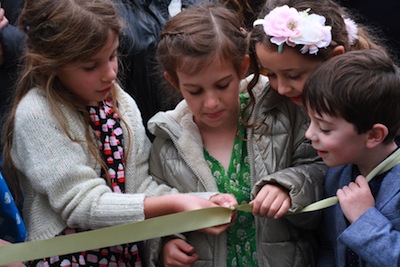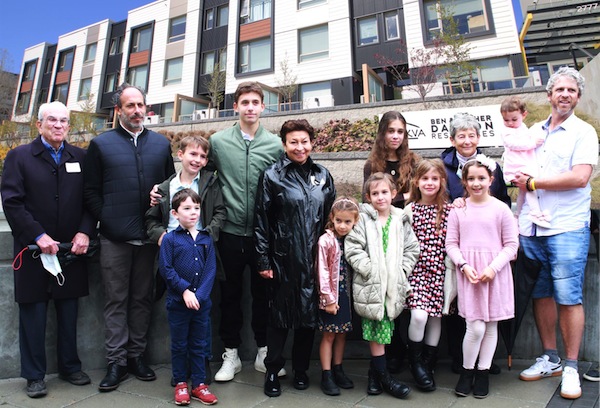The poverty rate among Canadian Jews is increasing, according to the Jewish Federations of Canada-UIA’s 2011 National Household Survey, and social-service providers across the country are weighing in on the issue.
“For the first time in two decades, Jewish poverty in Toronto is on the rise,” said Nancy Singer, executive director of the Kehilla Residential Program, a nonprofit housing agency in Toronto.
The survey reported that the Jewish poverty rate is climbing across the country. There are 57,195 Jews living below the poverty line, which translates to 14.6 percent of Canada’s Jews, compared to 14.8 percent among the wider Canadian population. In 2001, the Jewish poverty rate was 13.6 percent.
Montreal has the highest rate of Jewish poverty of Canada’s major cities, at 20 percent, while Ottawa has the lowest rate of 8.9 percent. Vancouver sits at 16.1 percent, Toronto at 12.9 and Calgary at 10.8.
Robin Gofine, vice-president of strategic community planning and engagement at UJA Federation of Greater Toronto, said the statistics on poverty highlighted in the survey are “sobering.”
“Poverty in the Jewish community is an issue that affects more than one in 10, certainly in Toronto, and it is imperative that poverty be atop the communal agenda,” Gofine said.
“It is not just people with low socioeconomic standing, but people who are suffering from mental and physical illness, people with disabilities, new immigrants, seniors, Holocaust survivors and single parents,” she said.
More than 24,000 Jewish people in the GTA live under the poverty line, said Fran Chodak, a Jewish Family and Child (JF&CS) social worker and coordinator of the agency’s STEP – Striving to End Poverty – project.
“We also know that the line is somewhat arbitrary and that there are a whole lot of people who struggle financially, even though they may not be defined as poor, among the working poor.”
Referring to the increased number of Jewish people in the GTA living under the poverty line, Singer noted that the cost of living in Toronto has increased. “Rents have certainly gone up and the stock of affordable housing has not,” she said. “People are struggling … and these are hard-working people who can’t make ends meet, who have two jobs.”
The numbers suggest that Montreal’s Jewish community has been hit the hardest.
“In 2001, 18.6 percent of the population was considered living in poverty, and now we’ve reached 20 percent,” said Leah Berger, senior planning associate for Federation CJA in the department of strategic planning and community relations.
“What we’re observing in Quebec is that there is a progressive offloading of services from the government on to community organizations, on to families and individuals. Services and programs that were initially provided by the government are no longer being provided and there is still a need for these. So, in response, communities, families and individuals are having to offer responses without necessarily the financial means to do so,” Berger said.
“We know government-mandated health-care premiums have increased over the last few years, while services have been reduced. Transportation costs have increased; the price of a bus pass increase[d] almost annually over the past 10 years. Finding a subsidized spot in a day care is another challenge, particularly for single-parent families. The cost of rent has increased.”
Susan Karpman, director of community services and immigration at Ometz, an employment and social service provider in Montreal, said the reason why Montreal’s Jewish community has the highest poverty rate in the country is due in large part to the city’s aging community.
Seniors make up 20.4 percent of Montreal’s Jewish community, compared to 16.9 percent in Canada’s Jewish population as a whole.
“We also have significant numbers of large families with lots of children in the observant community, and that also tilts the balance, because that community has its own challenges in terms of supporting the larger and growing communities,” she said.
In Vancouver, the most recent statistics indicate that 16 percent of Jews here live below the poverty line, an increase of about two percentage points since 2001, said Susana Cogan, housing development director at Tikva Housing Society, a nonprofit agency that works to provide affordable housing for working-age, Jewish, low-income adults and families.
Cogan also attributed Vancouver’s growing poverty rate to an “increase in [the number of] seniors and the difficulty for people to get full-time positions.
“Vancouver has the most expensive housing – rental and ownership – costs of the whole of Canada. Yes, there is an affordability problem that affects everyone, including members of the Jewish community,” Cogan said.
Mark Zarecki, a Montreal native who serves as the executive director of Jewish Family Services of Ottawa, said the poor in Ottawa used to be more diverse when immigration rates were higher, but the demographics in Ottawa have changed dramatically.
“The elderly community is much larger than it was 10 years ago, and the youth community, from ages zero to 14, has shrunk by 500 kids. It is an aging community,” he said.
Chodak, of JF&CS in Toronto, said poverty numbers are rising in the Jewish community for the same reasons they’re going up in the general community.
“The systemic issues that everyone faces in the community, Jewish people face, too. So whether there is a great deal of youth unemployment, we know that newcomers face poverty. We know single parents, when there is a family breakdown, we see single women raising children facing poverty. There are a lot more elderly living in poverty, and there are a great deal of people who are precariously employed,” Chodak said.
“Twenty-two percent of jobs in Ontario are precarious, meaning not stable, not full-time. There is no pension, no union, and these are often the jobs that youth have, that women have, that newcomers get, that older people might have, that the disabled might have, and that is where we are seeing a huge rise in poverty.”
Perhaps the first step to eradicating poverty in the Jewish community is raising awareness about the fact that it is an issue at all, Singer said.
“It’s a myth that we don’t have Jewish poor. The starting point is making the community aware that we are not much better off than the rest of the community at large. We are maybe a percentage point or two below the national average, and that is nothing to be proud of. The fact that we are [also] a well-off and generous, philanthropic community, we should be addressing the problem and helping people,” Singer said.
Robyn Segall, programs and marketing director at Ve’ahavta in Toronto, said she has encountered many people who are shocked to learn there are poor Jews.
“When we talk about our program to serve the homeless, very often the first question is, ‘But are there Jewish homeless? That’s impossible,’” Segall said.
“There certainly are Jewish people living on the streets…. People live on the street for so many different reasons – they’re escaping abuse, they are escaping myriad things, dealing with mental illness and, for each person, there is a different appropriate response, and sometimes what the community has to offer isn’t always what they need.”
Zarecki illustrated the fact that this issue is of vital importance to the Jewish community by referring to a quote he heard from a social- work professor at McGill University that stuck with him.
“A Jew is poor among Jews and Jewish among the poor,” Zarecki said. “So poverty has two impacts. It marginalizes Jews because they are not fully accepted within the Jewish community, and they are not fully accepted in the poor community [either].”
Zarecki also suspects that the Jewish poverty rate is higher than is being reported. “When you look at government statistics, they don’t include Jewish quality of life. What I mean by that is, for somebody who wants to affiliate with the community, it costs money. Eating kosher food, sending a child to a Jewish school, going to a synagogue, living near a Jewish facility – often the rents are higher in an area where there is a concentration of Jews,” he said.
“My thesis is that Jewish poverty increases assimilation…. That is why it is incumbent on Jewish communities to reach out to low-income people because … they will vanish from the community if they’re not reached out to.”
– For more national Jewish news, visit cjnews.com.



